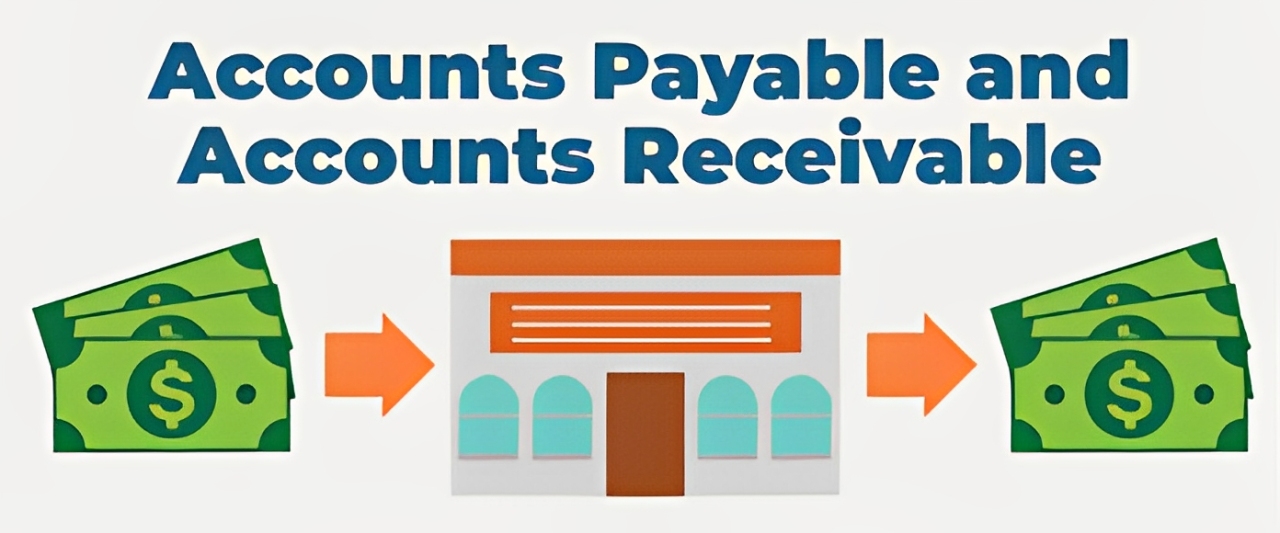
Managing accounts payable (AP) and accounts receivable (AR) can be a daunting task for businesses of any size. These critical financial processes ensure the smooth flow of money in and out of your business, impacting everything from your cash flow to your bottom line. However, if not properly optimized, they can lead to inefficiencies, delayed payments, and even errors in accounting. But don’t worry – with the right strategies, you can streamline these processes and boost your business’s financial health.
In this article, we’ll dive deep into the top 10 strategies to optimize your accounts payable and receivable processes. Whether you’re a small business owner or part of a larger financial team, these tips will help you improve efficiency, reduce errors, and ultimately keep your cash flowing smoothly. Let’s jump in!
1. Automate Your Processes
Why Automation is a Game Changer
If you’re still relying on manual data entry or spreadsheets to manage your AP and AR, it’s time to embrace automation. Software tools can handle a lot of the heavy lifting, from generating invoices to tracking payments and sending reminders. Not only does automation save time, but it also reduces the risk of human error, which can be costly.
- AP Automation: Tools like QuickBooks or Xero automate invoice processing and approval workflows.
- AR Automation: Automated invoicing systems can send out reminders, helping you get paid faster and more consistently.
Automation simplifies the process and ensures that you can focus on other strategic aspects of your business. Plus, it provides a much-needed safeguard against oversight or delayed payments.
2. Implement Efficient Invoice Management
The Key to Getting Paid Faster
An essential part of optimizing your accounts receivable process is streamlining your invoicing system. Delayed or poorly managed invoices can result in late payments or disputes, which can damage your cash flow.
- Set Clear Payment Terms: Always outline clear payment terms on your invoices, such as “net 30” or “due upon receipt,” to avoid confusion.
- Send Invoices Promptly: Don’t wait to send invoices. The sooner you send them, the sooner you’ll get paid!
- Track Your Invoices: Use a centralized invoicing system that can track which invoices are overdue and which are still pending. Software like FreshBooks or Zoho can handle this for you.
By creating a system that ensures invoices are sent on time and tracked diligently, you’ll reduce the likelihood of missed payments.
3. Build Strong Relationships with Suppliers and Clients
The Power of Communication
While it might seem obvious, fostering positive relationships with both suppliers and clients can go a long way in optimizing your accounts payable and receivable. Clear communication helps prevent misunderstandings and keeps both sides aligned.
- Negotiate Terms: Establish payment terms with your suppliers and clients that are mutually beneficial. Having agreed-upon terms helps avoid late fees or delays.
- Maintain Open Channels: Regularly check in with suppliers to ensure timely deliveries and payments. Similarly, keep clients informed about any changes to your payment processes.
Good relationships lead to trust, and trust makes financial negotiations smoother, leading to more efficient operations.
4. Use E-Payments for Faster Transactions
The Fast and Secure Way to Pay and Get Paid
In today’s digital world, paper checks are becoming a thing of the past. They’re slow, they can get lost, and they often lead to delayed payments. E-payments are quicker, more secure, and more efficient.
- Adopt Direct Transfers: Encourage clients to use bank transfers, credit cards, or payment systems like PayPal for quicker payments.
- Enable Recurring Payments: For clients with regular purchases, set up recurring billing to make payments automatic and hassle-free.
By making payments digital, you’ll minimize delays and improve cash flow, leading to a more efficient AP and AR process.
5. Improve Your Collection Efforts
Stay on Top of Late Payments
When it comes to accounts receivable, one of the biggest challenges is collecting overdue payments. It’s essential to follow up on outstanding invoices promptly and professionally.
- Send Reminder Notices: Set automated reminders for clients before and after payment due dates. This can prevent late payments and improve cash flow.
- Create a Collection Policy: Establish a formal policy for handling late payments, including follow-up strategies and escalation procedures.
By having a clear collection strategy, you reduce the likelihood of overdue payments and keep your cash flow steady.
6. Offer Discounts for Early Payments
Sweeten the Deal for Clients
Who doesn’t like a good deal? Offering a discount for early payments can be a great incentive for clients to settle invoices ahead of time. This strategy benefits both parties.
- 10% Discount for Early Payment: Offering a small percentage discount for payments made within a specified period (e.g., 10 days) can encourage clients to pay sooner.
- Loyalty Programs: For regular clients, you can set up a loyalty program offering incentives for consistent early payments.
By offering discounts, you encourage faster payments while strengthening your business relationships.
7. Reconcile Your Accounts Regularly
Keeping Things in Check
Regular reconciliation of your accounts payable and receivable ensures that everything is in order and that there are no discrepancies between your records and what’s actually happening.
- Monthly Reconciliation: Set aside time each month to reconcile your AP and AR with your bank statements.
- Spot Errors Early: By regularly reviewing your accounts, you can catch any errors early and correct them before they become bigger issues.
This proactive approach helps you stay organized and avoid costly mistakes down the line.
8. Optimize Your Credit Policies
Reduce Risk, Improve Cash Flow
Having a clear and efficient credit policy helps you minimize the risk of non-payment while keeping cash flow steady.
- Credit Limits: Set appropriate credit limits for clients based on their payment history or creditworthiness.
- Conduct Credit Checks: For new clients, always conduct a credit check to determine if they’re a good fit for credit terms.
By fine-tuning your credit policies, you protect your business from unnecessary risks while maintaining healthy cash flow.
9. Centralize Your Financial Data
One Dashboard for Everything
A centralized dashboard that shows both your accounts payable and receivable in one place helps streamline your entire financial process. It makes tracking payments and invoices more efficient and offers better visibility into your overall cash flow.
- Use Accounting Software: Tools like QuickBooks or Xero allow you to manage both AP and AR in one place.
- Real-Time Data: A centralized system ensures you have up-to-the-minute data on all transactions, which is crucial for informed decision-making.
Having everything in one place makes managing your finances a breeze.
10. Train Your Team Effectively
Knowledge is Power
Having the right team in place is essential for maintaining an efficient accounts payable and receivable system. Make sure your team is well-trained and up-to-date with the latest financial processes and tools.
- Ongoing Training: Provide regular training on new software, tools, and industry best practices.
- Cross-Training: Ensure that team members are cross-trained in both AP and AR functions to cover for each other in times of need.
A well-trained team will help ensure that your processes run smoothly and efficiently.
Conclusion
In today’s fast-paced business environment, optimizing your accounts payable and receivable processes is more important than ever. By implementing these top 10 strategies, you can ensure smoother operations, faster payments, and more consistent cash flow. From automation to improved communication and efficient invoicing, there are many ways to streamline these functions.
By making a few simple changes and staying on top of your finances, you’ll set your business up for financial success. So, what are you waiting for? Start optimizing your AP and AR processes today!
FAQs
Q1: What’s the best way to handle overdue accounts?
A1: The best approach is to have a clear collections policy in place. Send reminders before and after due dates, and if necessary, escalate to higher authorities or involve collections agencies.
Q2: Can automation really make a difference?
A2: Absolutely! Automation can handle repetitive tasks like invoicing, tracking payments, and sending reminders, which frees up time for your team and reduces human error.
Q3: How often should I reconcile my accounts?
A3: It’s a good idea to reconcile your accounts monthly to catch any discrepancies early and ensure everything is in order.
